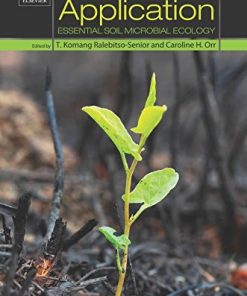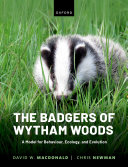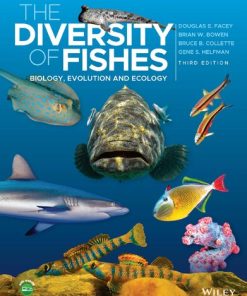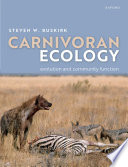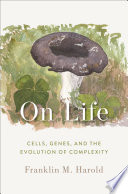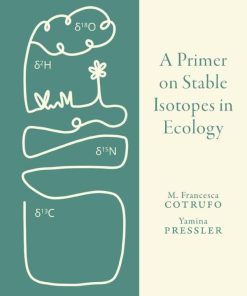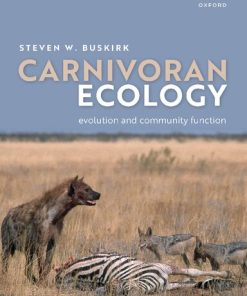A Primer of Life Histories Ecology, Evolution, and Application 1st edition by Jeffrey Hutchings 0192576255 9780192576255
$50.00 Original price was: $50.00.$25.00Current price is: $25.00.
A Primer of Life Histories: Ecology, Evolution, and Application 1st edition by Jeffrey A. Hutchings – Ebook PDF Instant Download/DeliveryISBN: 0192576255, 9780192576255
Full download A Primer of Life Histories: Ecology, Evolution, and Application 1st edition after payment.
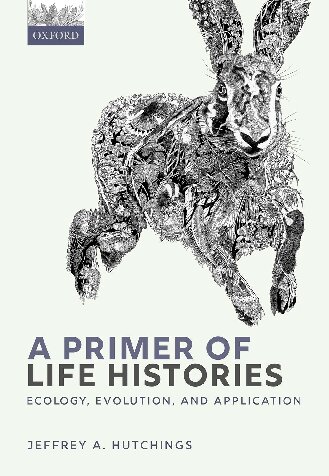
Product details:
ISBN-10 : 0192576255
ISBN-13 : 9780192576255
Author: Jeffrey A. Hutchings
Life histories can be defined as the means by which individuals (or more precisely genotypes) vary their age- or stage-specific expenditures of reproductive effort in response to genetic, phenotypic, and environmental correlates of survival and fecundity. Life histories reflect the expression of traits most closely related to individual fitness, such as age and size at maturity, number and size of offspring, and the timing of the expression of those traits throughout an individual’s life. In addition to addressing questions of fundamental importance to ecology and evolution, life-history research plays an integral role in species conservation and management. This accessible primer encompasses the basic concepts, theories, and applied elements of life history evolution, including patterns of trait variability, underlying mechanisms of plastic/evolutionary change, and the practical utility of life-history traits as metrics of species/population recovery, sustainable exploitation, and risk of extinction. Empirical examples are drawn from the entire spectrum of life. A Primer of Life Histories is designed for readers from a broad range of academic backgrounds and experience including graduate students and researchers of ecology and evolutionary biology. It will also be useful to a more applied audience of academic/government researchers in fields such as wildlife biology, conservation biology, fisheries science, and the environmental sciences.
A Primer of Life Histories: Ecology, Evolution, and Application 1st Table of contents:
1: Fundamentals
1.1 A Brief History of Life Histories
1.1.1 Breadth
1.1.2 ‘Life history’ in the nineteenth century
1.1.3 The turning point: 1930
1.1.4 Fifty years on (1930–1980)
Question: Why do some organisms breed multiple times, whereas others breed once and then die?
Question: Why do some organisms start breeding early in life and others comparatively late in life?
Question: Why do some organisms produce many, small offspring and others few, large offspring?
Question: How costly is reproduction?
1.1.5 Life-history ‘classics’
1.2 A Primer of Population Growth
1.2.1 Intrinsic rate of natural increase
1.2.2 Density-independent population growth
1.2.3 Density-dependent population growth
1.3 Life-History Traits
1.4 A Conceptual Life-History Framework
1.5 Summing Up and a Look Ahead
2: Life-History Variation
2.1 Why Are There So Many Kinds of Life Histories?
2.2 Life-History Variability among Species
2.2.1 Differences across phylogenetically diverse organisms
2.2.2 Body size
2.2.3 Age at maturity
2.2.4 Offspring number
2.2.5 Offspring size
2.2.6 Lifespan
2.2.7 Life-history differences within species can be considerable
2.2.8 Growth rate
2.3 Life-History Constraints and Invariants
2.3.1 Constraints
2.3.2 Life-history invariants
2.4 Patterns of Trait Covariation
2.4.1 Trait covariation in plants
2.4.2 Trait covariation in animals: early thinking
2.4.3 r- and K-selection
2.4.4 r-K-ic?
2.4.5 The ubiquity of r-selection
2.4.6 Fast-slow continuum
2.4.7 Pace-of-life syndrome
2.5 Summing Up and a Look Ahead
3: Genetic Variation and Phenotypic Plasticity
3.1 Genetic Underpinnings
3.1.1 Distinguishing phenotype from genotype
3.1.2 Genes and phenotypes
3.1.3 Quantitative genetics and partitioning genetic variance
3.2 Measuring Evolutionary Change in Response to Selection
3.2.1 Heritability and additive genetic variance
3.2.2 Response to selection
3.2.3 Genetic trade-offs
3.2.4 Genetic architecture
3.3 Phenotypic Plasticity
3.4 Norms of Reaction
3.5 Summing Up and a Look Ahead
4: Reproductive Effort and Costs
4.1 Trading Off One Set of Fitness Benefits for An
4.2 The Nature of Trade-Offs
4.3 Reproductive Effort
4.4 Costs of Reproduction
4.5 Energetic, Ecological, and Genetic Basis for Reproductive Costs
4.5.1 What constrains reproduction?
4.5.2 Energetic constraints
4.5.3 Ecological and behavioural constraints
4.5.4 Senescence
4.5.5 Measuring effort and costs: challenges and caveats
4.6 Summing Up and a Look Ahead
5: Vital Rates
5.1 Schedules of Mortality and Reproduction
5.2 Life Tables
5.2.1 Age-specificsurvival and fecundity
5.2.2 An example of a life table
5.3 Fitness
5.3.1 Rates of increase
5.3.2 Net reproductive rate, R0
5.3.3 Intrinsic rate of increase, r
5.3.4 Reproductive value, RV
5.3.5 Caveats
5.4 Estimating Fitness from a Life Table
5.5 Life-Table Approach to Exploring Optimal Age at Maturity
5.5.1 Incorporating a fecundity cost of reproduction
5.5.2 Incorporating a survival cost of reproduction
5.5.3 Incorporating new sources of extrinsic mortality
5.5.4 The ratio of juvenile to adult survival
5.6 Summing Up and a Look Ahead
6: Life-History Evolution in a Changing Environment
6.1 Shifts in the Mean and Variance of Environmental Conditions
6.2 Evolution of Age and Reproductive Effort at Maturity
6.2.1 Semelparity versus iteroparity
6.2.2 Life-history responses to changes in survival
6.2.3 Life-history responses to changes in the variance in survival
6.3 Life-History Evolution in a Variable Environment
6.3.1 Hedging evolutionary bets
6.3.2 Reducing the variance in fitness
6.3.3 Bet-hedging life histories
6.3.4 Deterministic versus stochastic r
6.4 Summing Up and a Look Ahead
7: Number and Size of Offspring
7.1 Extreme Variability in the Production of Propagules
7.2 Offspring Number and Size: Not All Options Are Possible
7.3 Evolution of Offspring Number
7.3.1 Early thinking: clutch size in birds
7.3.2 The Lack clutch size
7.3.3 Observed clutch sizes often differ from the Lack clutch size
7.4 Evolution of Offspring Size
7.4.1 Early thinking: a trade-offbetween size and number of offspring
7.4.2 Investment per offspring
7.4.3 Smith–Fretwell model of optimal size and number of offspring
7.4.4 Selection for increased fecundity
7.5 Summing Up and a Look Ahead
8: Alternative Life Histories
8.1 Alternative Reproductive Phenotypes
8.2 Dichotomies in Sex, Size, and Status
8.3 Thresholds and Conditional Tactics
8.4 Genetic Polymorphisms
8.5 Genotype-by-Environment Thresholds for Alternative Strategies
8.5.1 Threshold reaction norms
8.5.2 Thresholds for alternative strategies under selection
8.6 Frequency-Dependent Selection
8.7 Clarity in Terminology
8.8 Summing Up and a Look Ahead
9: Applications: Conservation Biology
9.1 Three Paradigms
9.2 A Stimulus for Incorporating Life History to Assess Species Vulnerability
9.3 Life-History Correlates of rmax
9.4 Species Vulnerability Assessments
9.4.1 Extinction
9.4.2 Exploitation
9.4.3 Climate change
9.5 A Comparison of Vulnerability Assessments
9.6 Species and Population Recovery
9.6.1 Generalized approaches are uncommon
9.6.2 Life-historycorrelates of recovery potential
9.6.3 The portfolio effect
9.7 Summing Up and a Look Ahead
10: Applications: Sustainable Exploitation of Evolving Resources
10.1 Sustainability
10.2 The Collapse of Canadian Cod
10.3 Maximum Sustainable Yield
10.3.1 The basic concept
10.3.2 MSY depends on population size
10.3.3 Estimating MSY
10.3.4 MSY for data-poor species
10.3.5 Understanding mortality: the key to sustainability
10.4 Reference Points to Guide Sustainability Initiatives
10.4.1 Limits, targets, and MSY
10.4.2 Reference points and life history
10.5 Harvest-Induced Evolution
10.5.1 Fisheries-induced changes in life history
10.5.2 Fisheries-induced evolution
10.5.3 Hunting-induced evolution
10.6 Summing Up
People also search for A Primer of Life Histories: Ecology, Evolution, and Application 1st:
a history of private life pdf
a brief history of life
a primer on postmodernism
a primer of visual literacy
a primer of life histories ecology evolution and application
Tags: A Primer, Life Histories, Ecology, Evolution, Application, Jeffrey Hutchings
You may also like…
Biology and other natural sciences - Genetics
Living Computers: Replicators, Information Processing, and the Evolution of Life
Biology and other natural sciences
Biology and other natural sciences - Zoology
Biology and other natural sciences - Zoology
The Diversity of Fishes: Biology, Evolution and Ecology, 3rd Edition Douglas E. Facey
Biology and other natural sciences
Carnivoran Ecology: The Evolution and Function of Communities Steven W. Buskirk
Science (General) - Theories of Science
Biology and other natural sciences - Ecology
Biology and other natural sciences - Ecology
Carnivoran Ecology : The Evolution and Function of Communities Steven W. Buskirk





